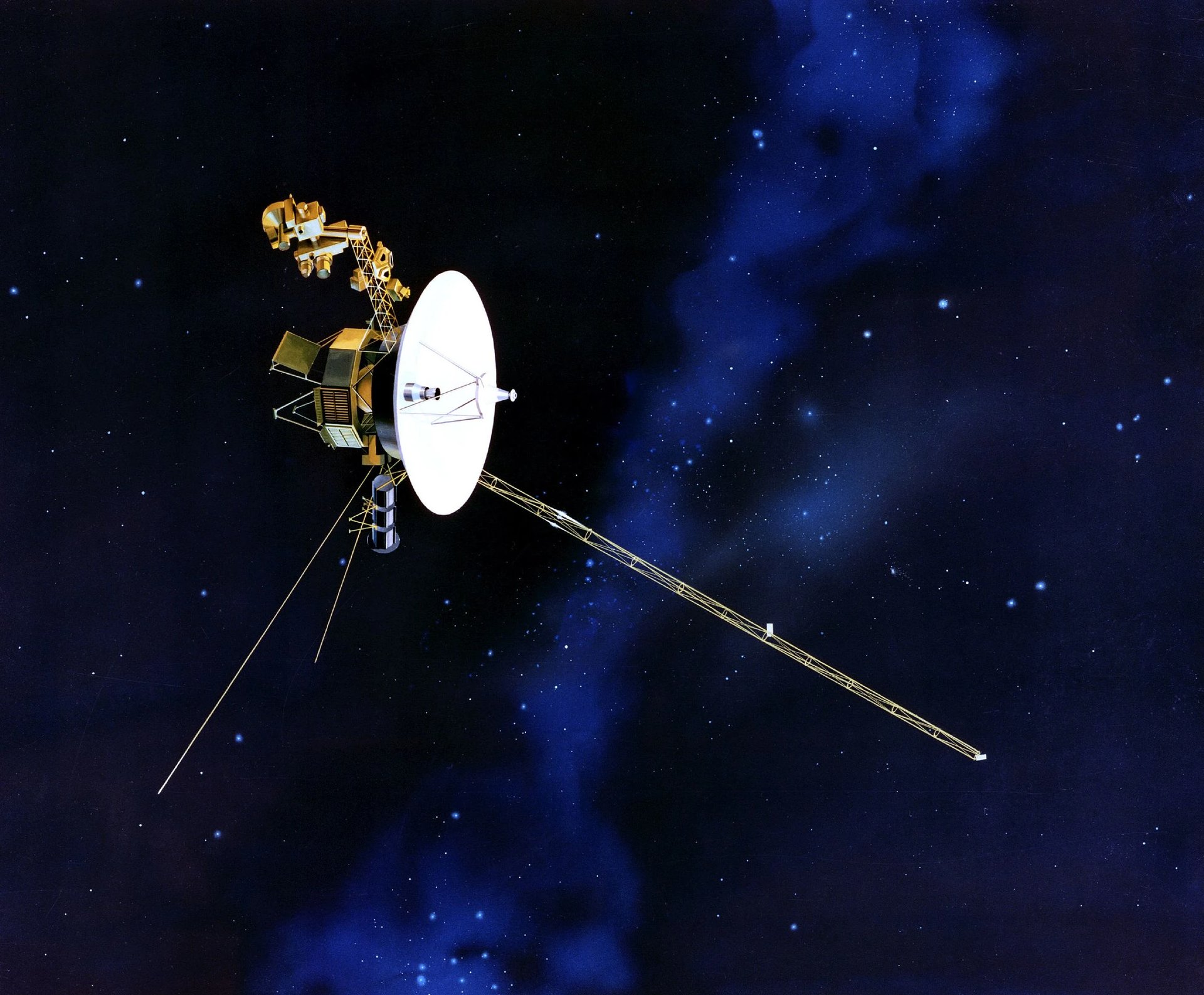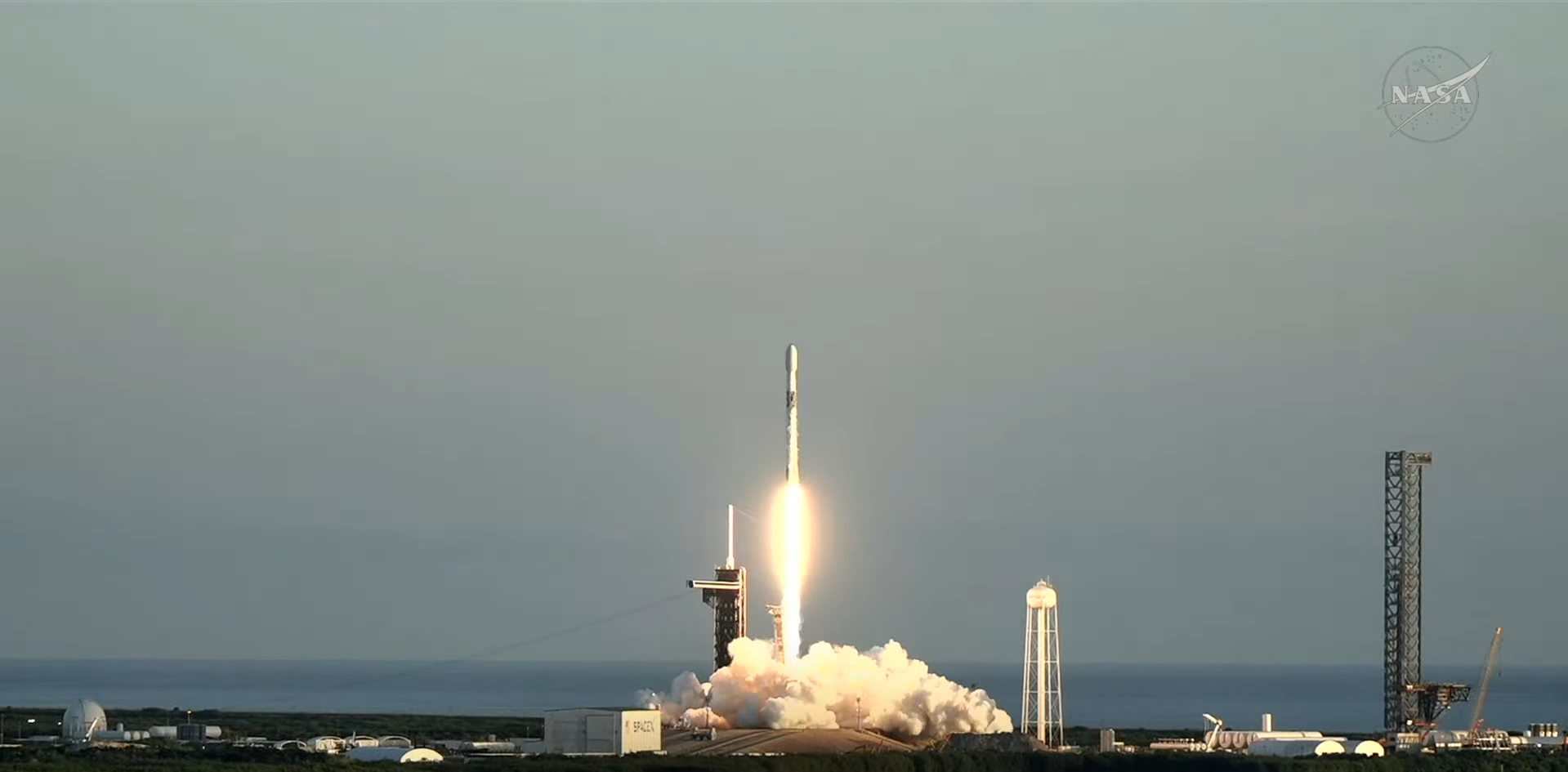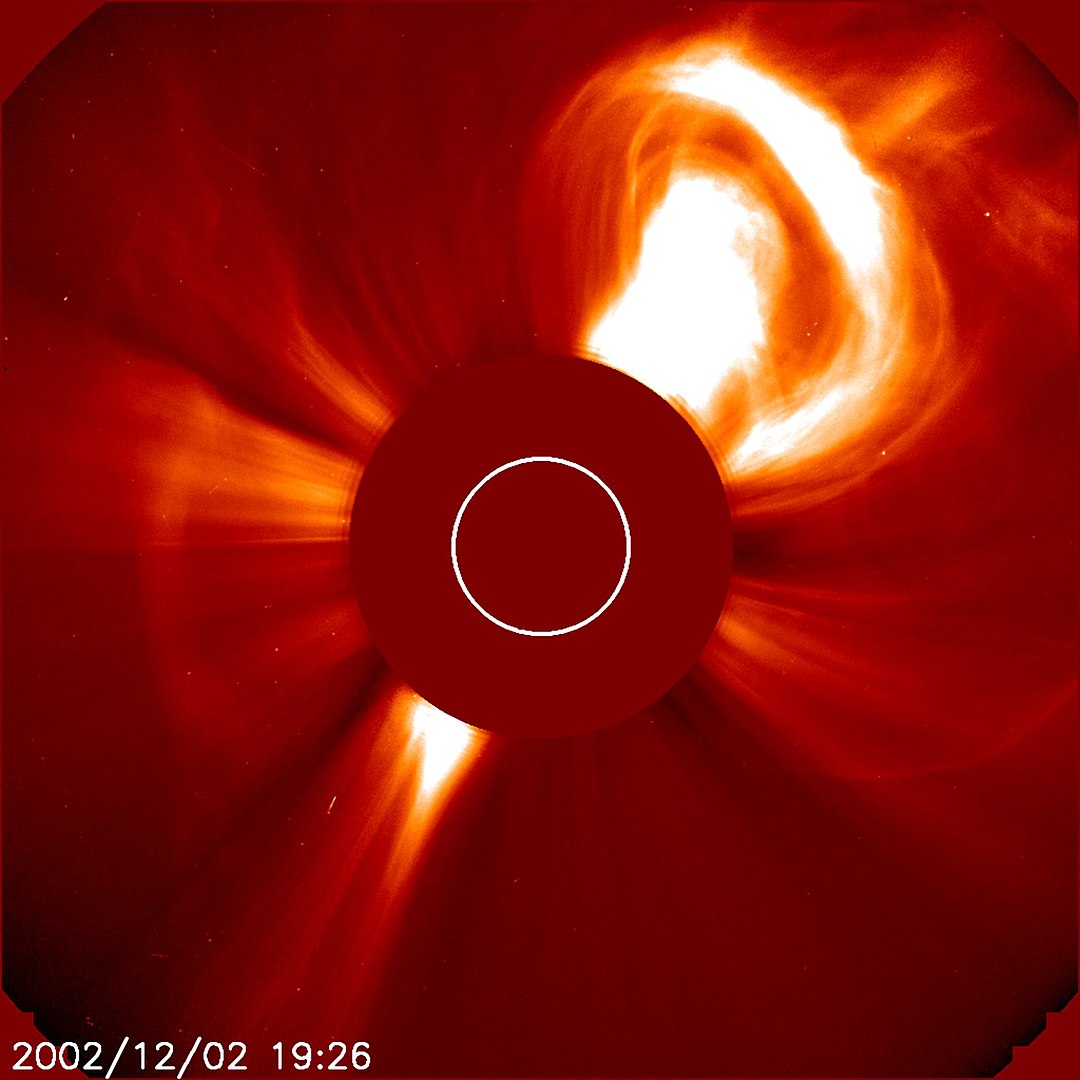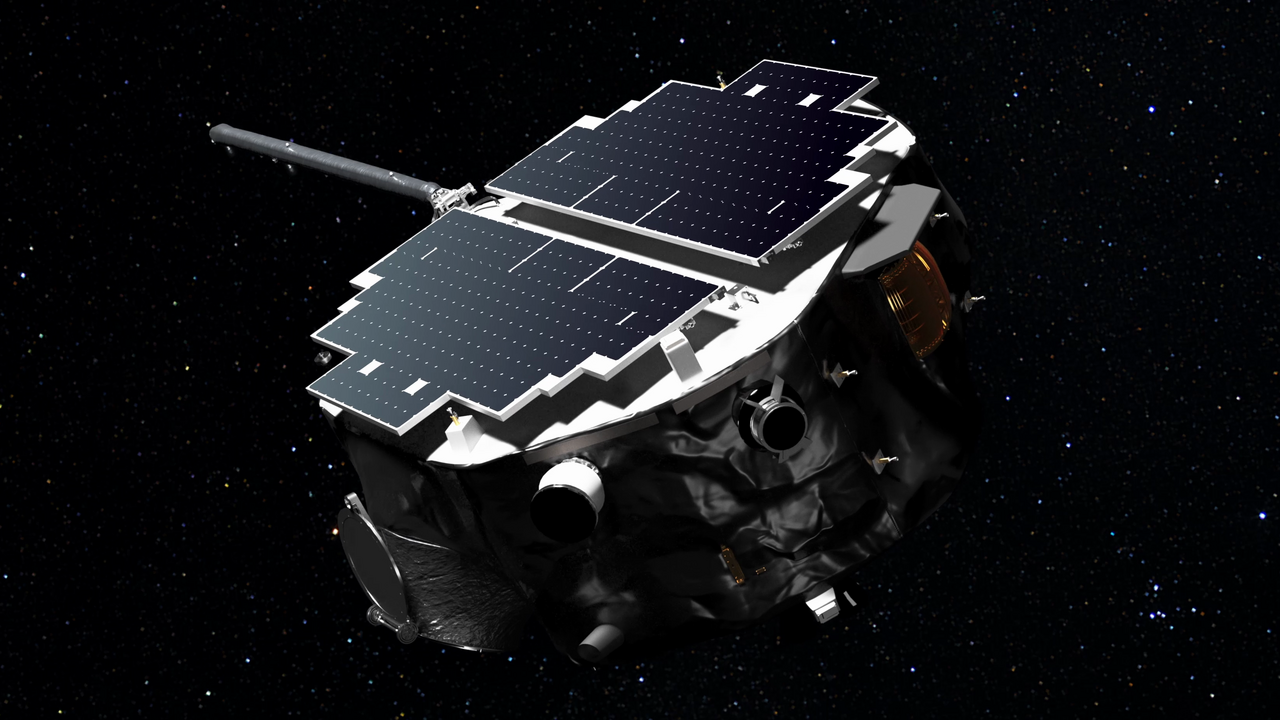The heliosphere is a giant bubble created by the Sun, extending far beyond Neptune's orbit and out into interstellar space. Voyager 1 crossed the boundary of the heliosphere (known as the heliopause) in August 2012 and Voyager 2 followed later in November 2018. They were 119 astronomical units from the Sun at the time, that’s 119 times further from the Sun than Earth. It protects us from dangerous levels of radiation and without it, life on Earth would be unlikely to have evolved.
 *Artist impression of Voyager 1 which left the Solar System in August 2012*
*Artist impression of Voyager 1 which left the Solar System in August 2012*
NASA's new mission, the Interstellar Mapping and Acceleration Probe (IMAP) was successfully launched earlier today by a Falcon 9 rocket from launchpad 39A at NASA's Kennedy Space Center in Florida. It will take about 10 minutes for the Falcon rocket to deliver the IMAP payload into orbit and, once there, it will begin its transition to its final destination. Its purpose is to create the most comprehensive map to date, of our heliosphere's boundaries ever attempted.
 *A SpaceX Falcon 9 rocket carrying NASA’s Interstellar Mapping and Acceleration Probe (IMAP,) Carruthers Geocorona Observatory, and the National Oceanic and Atmospheric Administration’s (NOAA) Space Weather Follow On-Lagrange 1 (SWFO-L1) missions launches from the agency’s Kennedy Space Center in Florida, Wednesday, Sept. 24, 2025 (Credit : NASA) Credit: NASA*
*A SpaceX Falcon 9 rocket carrying NASA’s Interstellar Mapping and Acceleration Probe (IMAP,) Carruthers Geocorona Observatory, and the National Oceanic and Atmospheric Administration’s (NOAA) Space Weather Follow On-Lagrange 1 (SWFO-L1) missions launches from the agency’s Kennedy Space Center in Florida, Wednesday, Sept. 24, 2025 (Credit : NASA) Credit: NASA*
Positioned at Earth’s Lagrange Point 1, IMAP will be almost 2 million km from Earth and carry 10 instruments designed to map the heliosphere offering 30 times higher resolution than previous studies. It will investigate how charged particles from the Sun are energised to form the solar wind and how this solar wind interacts with interstellar space at the very edge of our Solar System. A study that is useful in itself but it will also provide crucial early warnings to space weather events that could pose a threat to astronaut safety, to satellites in orbit and power grids.
IMAP will be studying energetic neutral atoms (ENA’s,) particles that travel in straight lines across great distances without being deflected by magnetic fields. They begin as charged particles from the Sun, but after racing across the Solar System and colliding with interstellar material, often lose their charge, become neutral and bounce back toward us. Its tracking and studying these that enable us to explore distant regions of space and construct maps of boundaries that would otherwise be invisible to us.
Not only will it help us map the edge of our Solar System, IMAP will also start to serve as an early warning system for space weather events. From its vantage point, IMAP will be able to provide around 30 minutes warning of dangerous solar wind particles headed toward our planet. It will also study interstellar dust which is thought to originate from exploded stars. The specific chemical composition of this dust reveals where it came from in the Galaxy and helps us understand what exists between the stars.
 *Coronal mass ejections like this one captured by a solar coronagraph are the source of solar wind in our Solar System*
*Coronal mass ejections like this one captured by a solar coronagraph are the source of solar wind in our Solar System*
To achieve all of this, IMAP will rely upon its 10 scientific instruments. There are three specialised detectors (IMAP-Lo, IMAP-Hi, and IMAP-Ultra) which will capture the energetic neutral atoms from different energy ranges. In addition, there are four other SWAPI, CoDICE, HIT, and SWE which will analyse charged particles from both the solar wind and interstellar space to understand how particles gain such high energies. The remaining three instruments provide supporting measurements; MAG uses twin magnetometers to measure magnetic fields and will provide real time space weather warnings, IDEX will analyse cosmic dust from exploded stars, and GLOWS studies ultraviolet radiation from the solar wind. Together they provide an incredible suite of scientific instruments that hopes to finally help unravel some of the remaining mysteries of our Solar System.
Source : NASA’s IMAP Mission to Study Boundaries of Our Home in Space
 Universe Today
Universe Today
